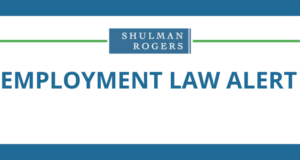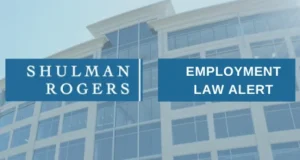
In a landmark move for inter-agency cooperation, the Equal Employment Opportunity Commission (“EEOC”) and the Wage and Hour Division of the Department of Labor (“WHD”) recently entered into a Memorandum of Understanding (“MOU”) focused on the enforcement of federal laws overseen by both agencies. This collaboration will focus on information sharing, joint investigations, and extensive training and outreach initiatives.
Key Highlights of the MOU
- Enhanced Information Sharing
- Data Exchange: The EEOC and WHD can share data that aids either agency’s enforcement. This sharing includes complaint referrals, contents of investigative files, employers’ submissions like EEO-1 Reports or payroll data under the Fair Labor Standards Act (FLSA), and other permitted analyses or summaries related to an investigation.
- Focus Areas for Information Sharing: The collaboration will particularly spotlight:
- Employment discrimination based on various factors, including race, sex, age, and disability.
- Compensation practices that break the law, such as wage discrimination or violation of minimum wage standards.
- Unlawful working and living conditions.
- Denial of provisions for nursing mothers.
- Unlawful retention of tips.
- Denial of family and medical leave or related discrimination.
- Issues surrounding misclassified employees.
- Retaliation against workers advocating for their rights, especially in cases exploiting immigration status.
- Coordinated Investigations and Enforcement
- Referral System: If either agency identifies possible unlawful conduct during an investigation that falls under the other’s jurisdiction, they will provide guidance to the aggrieved party to file a charge with the other agency.
- Joint Investigations: If both agencies find a violation, both agencies’ field staff will collaborate and strategize on the best approach, which might involve one agency holding its investigation while the other proceeds, marking a shift towards more comprehensive enforcement actions.
- Publicizing Resolutions: If a joint decision isn’t reached, agencies will discuss with involved parties on announcing any resolutions. Confidentiality is paramount, and according to the MOU, details about investigations or violations found by the other agency won’t be disclosed without mutual consent.
- Impacted Statutes: The MOU will notably influence various acts, including but not limited to the FLSA, Equal Pay Act, Title VII of the Civil Rights Act, Age Discrimination in Employment Act, Americans with Disabilities Act, Genetic Information Nondiscrimination Act, and the Pregnant Workers Fairness Act of 2022.
- Training and Outreach
- Collaborative Efforts: Both the EEOC and WHD will:
- Train each other’s staff on recognizing potential violations.
- Participate in joint outreach and public awareness campaigns.
- Share or co-create training materials.
- Formulate joint policy guidelines and technical assistance documents when suitable.
Guidance for Employers
Given the heightened commitment to enforcement by the EEOC and WHD, employers are likely to experience more frequent investigations. Considering the new data-sharing provisions, any information provided to one agency could potentially be shared with the other. In light of these developments, it is imperative that employers engage legal counsel when sharing information with either agency during investigations to ensure compliance and avoid potential pitfalls.
We highly encourage you to contact your Shulman Rogers attorney for guidance in the event you are contacted by either the Equal Employment Opportunity Commission or the Wage and Hour Division of the Department of Labor with regard to any request for information or investigation.
The full text of the MOU can be found here.
CONTACT |
MORE INFORMATIONThe contents of this Alert are for informational purposes only and do not constitute legal advice. If you have any questions about this Alert, please contact the Shulman Rogers attorney with whom you regularly work or a member of the Shulman Rogers Employment and Labor Law Group. To receive Employment Law Alerts and other timely news and information from Shulman Rogers, please click HERE to subscribe. |





